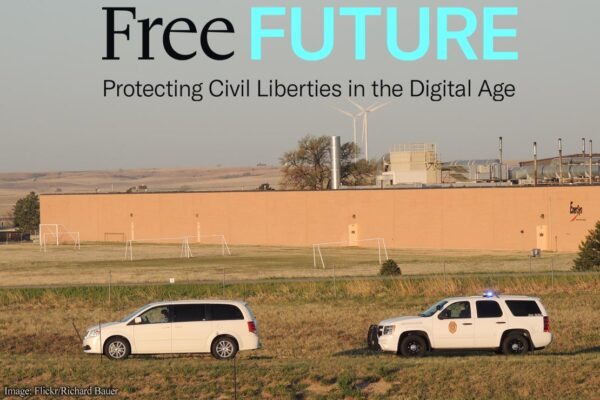Dr. Bustamante arrived in Tucson late Thursday evening. He visited the Florence Detention Center early in the morning on May 4, then traveled to the border where he met with federal officials at the Nogales Border Patrol Station, which covers 32 miles of border from the Patagonia Mountains east of Nogales to Ruby, west of Nogales. It's one of the country's busiest border patrol facilities, and has seen a tremendous influx of federal resources in recent years. There are cameras, sensors, lights and fences , all high tech gadgets that contribute to the militarization of the once-pristine Arizona-Sonora border.
On Saturday morning, Dr. Bustamante met with Dr. Bruce Parks, Pima County's Medical Examiner. Since the Border Patrol has no real methodology for tracking migrant deaths, Dr. Parks has made an increased effort over the past few years to identify bodies of migrants who die in the harsh Arizona desert. From 2003 through 2006, 721 bodies were recovered in the desert, often due to exposure to heat or cold.
At around noon, Dr. Bustamante took a quick break for lunch at Las Cazuelitas de Tucson, where he met with activists and leaders from Coalición de Derechos Humanos, and with representatives from other NGOs from the Phoenix area, including the Macehualli Day Labor Center and the ACLU of Arizona. The group traveled to the Armory Park Senior Center, where a room full of nearly two dozen community members who have been directly impacted by the government's misguided border policies greeted Bustamante. One by one, these courageous individuals shared their personal stories.
Arturo Rodriguez, a soft-spoken 16-year-old, gave a heartfelt testimony about his first-hand encounter with Roy Warden, a local anti-immigrant vigilante who threatened to kill Arturo before punching him. The teen captured the attack on video; it later served as the only reason police decided to charging Warden with assault.
Sara Roberts, a nurse and volunteer with Samaritans and No More Deaths, gave the SR a clinical run down of what bodily distress migrants face while crossing the border. Fractures, sprains, severe dehydration and kidney failure all signal the body is shutting down, Roberts told him, and that at temperatures above 104 degrees, you increase your chances of dying by 50 percent. In the last stages of death, people begin to hallucinate and eat sand in their quest for water.
Melissa McCormick from the Binational Migration Institute (BMI) of the University of Arizona's Mexican American Studies and Research Center then gave a quick rundown of the correlation between migrant deaths due to exposure and the federal government's mid-1990s policy to move migration away from urban centers like San Diego and El Paso and into dangerous, remote expanses of Arizona's western desert. Creating a "funnel effect," the policy caused a 22.2 percent increase in the migrant deaths due to exposure.
Raja Jorjani, an attorney with the Florence Immigration Project, continued the discussion on conditions of confinement for immigrant detainees. Immigrants are spending up to seven months in jail without knowing their charges or if they'll ever be released. Longtime residents are being prosecuted for non-violent drug convictions and being detained on exorbitantly high bonds. Two-hundred and fifty of the detainees are immigrant children being warehoused at shelters in the Phoenix area. Solitary confinement is being used as a treatment for mental health problems , a burden that often prompts people to abandon their valid legal claims and risk deportation for fear of continued imprisonment.
High school student Luis Nava talked about his experience being questioned by immigration officials and placed in deportation proceedings after his teacher inquired whether he could cross to the Canadian side of Niagara Falls for a school field trip. Although the case was dropped after the judge confirmed he was targeted of racial profiling, it served as a frightening reminder of how immigration officials still selectively enforce laws against people of color.
Miguel Espinoza Vazquez, a Arizona State University student who is facing deportation after a Gilbert officer stopped him for making an improper right turn, told of how he's lived in the U.S. for most of his life, never missed a day of high school, earned a scholarship to ASU, and is now being deported to a country he knows nothing about. He's out on $2,500 bail and now trying to figure our how to pass as many finals and take as many credits as possible before being deported. The irony: He's a justice major.
The meeting ended with testimonies by two members of local, indigenous Native American tribes who are working to secure rights of passage for ceremonial purposes along the border, where much of the militarization has closed off routes for southern territories where ceremonies are held. A Tohono O'odhom activist ended the meeting with this final plea for the SR: "We just want free passage in our own territory."



